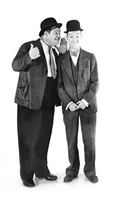I love Chopin, at the moment I am learning to play Nocturne in E Flat Op.9 no.2.
When I practice the piano I use layered learning, breaking down the learning process into different steps.
How do I do that first I divide the piece into sections, sections that make sense like the end a phrase, which not necessarily the end of the line of music. Small sections work best.
I usually start by using separate hands and then putting the two together, but not until each hand on its own is perfect. There is a lot to consider, timing, rhythm, flow, phrasing and expression. Usually I only aim for half an hour quality time with my piano, find little and often works best. My playing is not just about my pieces, I like a bit of variation: warm up, an exercise, some sight reading. My main aim is get a reproducible performance. Often when re-visit some of my old pieces i am amazed at the improvement.
Psychologists say: A stimulus enters long-term memory (that is, it is "learned") after it has been attentively observed 7 times. But if an "incorrect" stimulus is first learned, it then takes an average of 35 (!) repetitions to learn the "corrected" stimulus. Learning it right the first time is five times easier than re-learning after learning it incorrectly.
Wow - it is better to learn something right first time around!!
Can the layered learning that I apply to my piano playing be applied to my interpreting?
Answer yes!! - Its about breaking down the process into steps then repeating each until I can get a reproducible performance.
It is this type of learning that provides the deliberate practice that improves my interpreting performance not all at once but with time.
And the Chopin?... I am getting there, but it takes time and commitment.
When I practice the piano I use layered learning, breaking down the learning process into different steps.
How do I do that first I divide the piece into sections, sections that make sense like the end a phrase, which not necessarily the end of the line of music. Small sections work best.
I usually start by using separate hands and then putting the two together, but not until each hand on its own is perfect. There is a lot to consider, timing, rhythm, flow, phrasing and expression. Usually I only aim for half an hour quality time with my piano, find little and often works best. My playing is not just about my pieces, I like a bit of variation: warm up, an exercise, some sight reading. My main aim is get a reproducible performance. Often when re-visit some of my old pieces i am amazed at the improvement.
Psychologists say: A stimulus enters long-term memory (that is, it is "learned") after it has been attentively observed 7 times. But if an "incorrect" stimulus is first learned, it then takes an average of 35 (!) repetitions to learn the "corrected" stimulus. Learning it right the first time is five times easier than re-learning after learning it incorrectly.
Wow - it is better to learn something right first time around!!
Can the layered learning that I apply to my piano playing be applied to my interpreting?
Answer yes!! - Its about breaking down the process into steps then repeating each until I can get a reproducible performance.
It is this type of learning that provides the deliberate practice that improves my interpreting performance not all at once but with time.
And the Chopin?... I am getting there, but it takes time and commitment.

 RSS Feed
RSS Feed